by Bill Hadley, UNeMed | June 26, 2012
Part of our work at UNeMed includes reading through the published research from UNMC. When we identify a possible invention we immediately contact the researcher so we can begin evaluating the invention. We recognize that the primary concern of our faculty is their ability to publish on their research. As an institution of higher learning, the dissemination of knowledge from its faculty is clearly – and rightfully – UNMC’s highest priority. On the other hand, the patent law discourages inventors from disclosing their innovations to the public prior to filing an application for a patent – often with strict penalties. Managing this conflict is one of UNeMed’s most important functions.
As you might imagine then, due to these conflicting paradigms, we are constantly balancing the desires of our faculty to publish with the university’s desire to commercialize upon the value of their research. When there is an unavoidable conflict between the ability to publish and the ability to patent, the publication rights must come first. When looking at disclosures that come out of the university – in terms of publications, presentations, or posters, to name a few – we are primarily concerned with eliminating “enabling public disclosures” of patentable subject-matter. If a given disclosure is both ‘public’ and ‘enabling’, it can have severe ramifications on the patentability prospects of an invention contained therein. That being said, a researcher armed with a prior knowledge of the patent law – and some foresight – can navigate these oft-confusing waters and successfully publish their work and preserve their patent rights at the same time.
With that in mind, let’s look at what, exactly, constitutes an enabling public disclosure, what the effect of such a disclosure is, and how you can take steps to prevent an inadvertent disclosure of your invention.
A disclosure is “public” if interested members of the public could obtain access to the disclosure of the invention if they so desired (Constant v. Advanced Micro-Devices Inc. , 848 F.2d 1560 (1988)). Note that under this standard there is no requirement that members of the public actually accessed the information and all that is required is that they could have. Thus, a single copy of a graduate thesis, which sat on a library shelf for a number of years in a university library without being checked out, was found to be a public disclosure because the university had a catalog system which would have allowed a member of the public to find the thesis, were they so inclined (In re Hall , 781 F.2d 897 (1986)).
A disclosure is “enabling” if it teaches someone of ordinary skill in the art how to devise the invention without undue experimentation (Struthers Scientific & Intern. Corp. v. Rappl & Hoenig Co., 453 F.2d 250 (1972)). Examples of enabling disclosures that commonly take place in an academic setting are research presentations, journal submissions, federal grant applications (which may or may not be considered “public” based on the application’s availability under a Freedom of Information Act request), postings on individual lab websites, a thesis or dissertation, and meetings with companies or colleagues outside of UNMC where there is no confidentiality agreement in place.
The relevant statute when one looks at public disclosures of an invention is 35 U.S.C. § 102(b). Assuming, for the moment, that the claimed invention meets the threshold criteria of novelty, usefulness, and non-obviousness, 35 U.S.C. § 102(b) provides another restriction relating to the inventor’s use of the patented invention prior to their application for a patent.
There is a lot packed into §102(b), but the take-home message is this: to be eligible to receive a patent in the U.S., the claimed invention must not have been previously publicly disclosed (by the inventor or anyone else) more than one year prior to the date of application. Thus, for a U.S. patent, a public disclosure starts a clock: an inventor has one year from the date of the enabling public disclosure to file for patent protection – whether the invention is ready or not. (This rule will be subtly changed under the America Invents Act. When the relevant provision comes into effect, we will update this post accordingly. For now, however, this is the applicable rule.)
For patents filed in a foreign country, the Patent Cooperation Treaty (“PCT”) specifies, among other things, rules relating to patent eligibility. Rule 64 of the PCT is even less forgiving than §102(b); under Rule 64.1(a) , for patents filed internationally, there is no one-year grace period. Any written disclosure of the claimed invention prior to the filing date automatically removes eligibility to receive a patent. This means that as soon as you publicly disclose your invention, you lose the international patent rights and your work will no longer be protected in the international market.
If these rules seem rather vague, you are clearly reading them properly. Fortunately, there are a number of steps that can be taken to prevent an enabling public disclosure of a potentially patentable invention. While there is a grace period for a U.S. patent, given the strict rules internationally, we always strive to protect patentability prior to any enabling public disclosure.
The easiest way to protect your rights (and UNMC’s) is to work with us. If you believe your research may contain potentially patentable subject-matter, please contact UNeMed. We are always interested to hear about your research and we deal with this issue on a daily basis. Odds are, we can provide guidance in a matter of minutes. If, after discussing your research, we think that a patent is possible, we can look at the type of disclosure that you would like to make and take steps designed to preserve future patent rights (such as filing a provisional patent application or putting in place a confidentiality agreement).
Finally, here are some other things you may want to keep in mind in order to prevent an inadvertent enabling public disclosure of your patentable invention:
- Consider sending UNeMed journal manuscripts, speech notes, or poster images prior to submission or public display. Often we can review these in a matter of hours and provide feedback or file a provisional patent application.
- Let us know if industry contacts you about your research or to contract for your services. A simple CDA can protect against an accidental slip of the tongue without hindering your relationship with the company.
- When submitting a state or federal grant application, list as confidential the pages of the application which contain a description of potentially patentable subject-matter and write “CONFIDENTIAL” on each identified page.
- To preserve confidentiality of a thesis, request that the thesis be kept in a secure section of the library and not be made available to the public until patent protection is in place.
- Oral disclosures such as departmental seminars or thesis defenses may also be public disclosures, based on the ability of a member of the public to attend. If a potentially patentable invention will be discussed in one of these meetings, you may want to contact UNeMed.
UNeMed strongly supports the UNMC community’s interests in public dissemination of knowledge, academic freedom, and open collaboration. Fortunately, with a little foresight, it is possible to fulfill all of these prerogatives while preserving patent rights in the results of that work. If you are contemplating a public disclosure of your research and feel that there may be patentable subject-matter discussed therein, please don’t hesitate to contact us. Rest assured, we share the same goals you do and will be happy to discuss all avenues available to satisfy both your and UNMC’s interests.
Please leave any questions or suggestions you may have in the comment section below. You can also shoot me an email at bill.hadley@unmc.edu. I will be happy to address any thoughts you may have.
Nothing in this post should be construed as legal advice. It has been developed by the UNeMed staff as an educational resource for faculty, staff, students, and other personnel associated with the University of Nebraska Medical Center. While all information contained herein has been thoroughly fact-checked, this site is provided on an “as is” and “as available” basis. Neither UNeMed nor the University of Nebraska Medical Center make any representations or warranties of any kind, express or implied, as to the site’s operation or the information, content or materials included on this site. To the full extent permissible by applicable law, UNeMed and the University of Nebraska Medical Center hereby disclaim all warranties, express or implied, including but not limited to implied warranties of merchantability and fitness for any particular purpose. Neither UNeMed nor the University of Nebraska Medical Center will be liable for any damages of any kind arising from the use of or inability to use this site. You expressly agree that you use this site solely at your own risk.

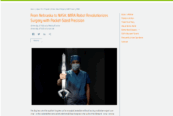
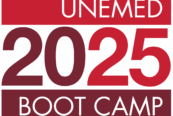

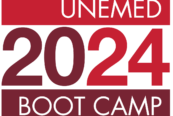


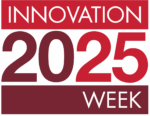
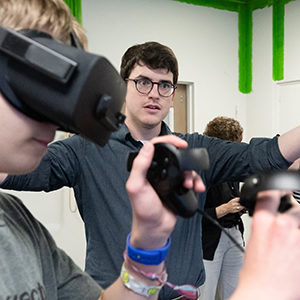
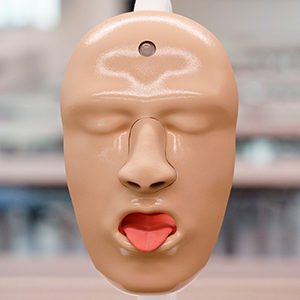


[…] will not guarantee that the invention will be developed into a marketable product. On the contrary, patent rights are affected by public disclosures, such as presentations and publications in some form. Because patent laws vary by country, a […]